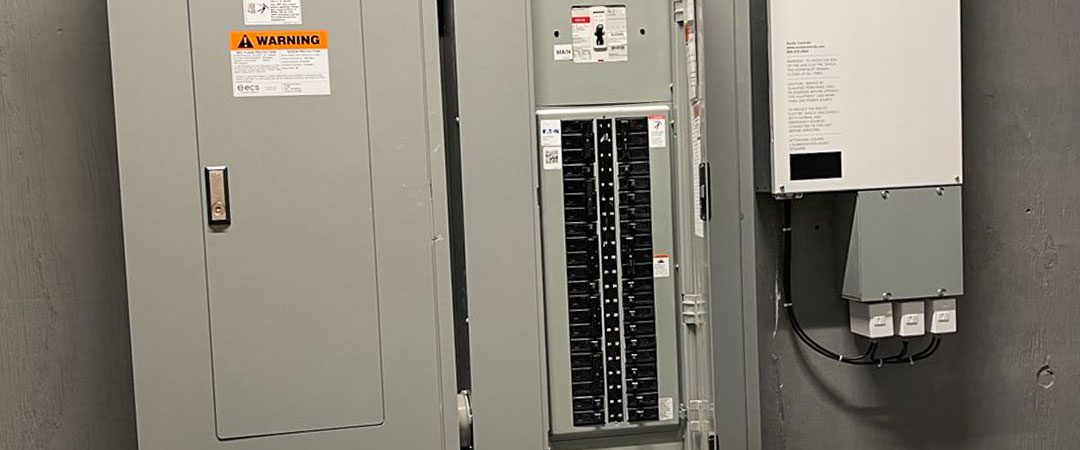
Job sites can present countless electrical hazards if we don’t follow safety standards or understand the qualifications of an electrical hazard. Keep these electrical safety tips front of mind at your workplace and beyond, so everyone stays safe and sound year-round.
Electrical safety tips for the workplace
- According to the Occupational Safety and Health Administration (OSHA), “All employees who face a risk of electric shock, burns or other related injuries, not reduced to a safe level by the installation safety requirements of Subpart S, must be trained in safety-related work practices required by 29 CFR 1910.331-.335.”
- Do not allow electrical equipment to come into contact with wet areas.
- When disconnecting equipment that is plugged in, gently pull on the plug — not the cord. Otherwise, you risk damaging the cable and causing electrocution.
- Stay organized. Tidy any exposed electrical cords and ensure they are properly tucked away in an area where they cannot be stepped on/tripped over, exposed to children or animals, severed, etc.
- If your job site requires a switchboard, ensure you understand its limits. Verify that any electrical power flowing through your switchboard resembles the amount of power it distributes to prevent overheating.
- Identify power lines that are present at your job site, so you can plan accordingly.
- Protect others by installing outlet covers when outlets are not in use.
- Do not use staples to fasten a cord to an area.
- If you notice a light flickering, investigate. Often, this can be caused by a loose connection or the bulb itself needs to be fastened or replaced.
- If there is high-voltage equipment nearby, warn others by installing visible warning signs.
- If you notice an electrical issue or threat, do not attempt to repair unless you have expertise.
- Do not use cords to hang electrical equipment.
- Maintain a safe distance between yourself and any electrical hazard — especially if the hazard carries an electrical current greater than 50V.
- Prevent all potential for contact with a live electrical current by closing panel doors, covering exposed wires, etc.
- When necessary, follow your lockout/tagout procedures to prevent accidents and isolate electrical energy.
- Do not stretch or press electrical cords.
- Inspect cords and plugs prior to use. If you discover any defects, do not attempt to use.
- Install barriers around electrical hazards to prevent workers from coming in contact with a live current or exposed wires.
- Always assume that electrical parts are carrying a live current — do not use conductive tools in the area.
- Do not operate electrical equipment in the presence of flammable materials (e.g., gases, dust, vapors, etc.).
- Ensure only qualified personnel are operating on live electrical wires or equipment.
- Follow electrical safety practices that have been outlined by your company. Every company has unique guidelines for protecting against electrical hazards — be familiar with your company’s safety procedures prior to operating any electrical equipment.
- Do not use portable ladders with conductive siderails where the worker or ladder may come in contact with energized parts.
- Isolate all parts to electrical equipment before performing maintenance or cleaning.
- Conductive apparel, such as jewelry, watchbands, chains, etc., should not be worn when working with electrical equipment or exposed, energized, electrical parts.
- Wear protective, nonconductive equipment for the eyes, face and hands when working with equipment that has potential to cause electric arcs or flashes.
- If electrical equipment is not in working order or is potentially faulty, install warning signs for others, so they do not use or approach the equipment until it can be repaired or removed by qualified personnel.
- Replace all worn or frayed cables as soon as possible.
- Ensure you have quick, easy access to the power source of equipment, so power can be quickly cut off in the event of an emergency.
- In an emergency, call an expert or emergency services, so they can safely assess the situation and resolve the issue.
When in doubt, always ask for help
Qualified, trained electricians are there to help you when you are faced with electrical hazards. Always ask for help if your safety and the safety of those around you is at risk.
Read more